Downtown San Diego is a ghost town when it comes to its unhoused resident community
By: Petrina Tran
April 16, 2024
Story Highlights
- San Diego experiences growth in the homeless population from 2023 to 2024.
- Members of the San Diego community both living and serving those on the street offer insight on how San Diegans can shift their perspective.
- “You become invisible. You become a non-person, a non-citizen. You’re suddenly taking up public space. Why does becoming homeless make me non-public anymore?” said Sean Thom, a local resident who recently was evicted from his apartment.
SAN DIEGO – Walking the streets of downtown San Diego on a chilly Monday evening in March, one might see an unusual sight. From the Smart & Final on 720 15th Street to the heart of Gaslamp Quarter, sidewalks are clear and quiet with the exception of an occasional passerby. At first glance, this seems like a pleasant surprise. But for local residents, it raises questions.
The empty streets of downtown San Diego were previously home to hundreds of unhoused residents. On July 31, 2023, enforcement of an encampment ban came into effect as the local unhoused community was pushed to the fringes of the city center. This has been especially true over the past few weeks in preparation for visitors and tourists to San Diego.
Diego Gaspar, a volunteer with the nonprofit organization Streets of Hope, often gives out supplies to the unhoused. On this evening in March, Gaspar realized he was walking a lot further than he normally does. The group meets without fail every Monday night in front of the Smart & Final on 15th Street to pack and pull carts full of bagged lunches, blankets and miscellaneous other donated supplies to support the community. They provide resources as well as human interaction to the unhoused community living downtown. The group usually gathers and splits off to walk two to three blocks distributing supplies until they run out. On this occasion, volunteers had to walk over two miles before the wagon was empty.
Streets of Hope volunteers assemble bags of food and pack them into wagons for distribution on Feb. 26, 2024. The group meets every Monday night in front of the Smart & Final on 15th Street to pack and distribute supplies to the unhoused community in downtown San Diego. Photo by Petrina Tran.
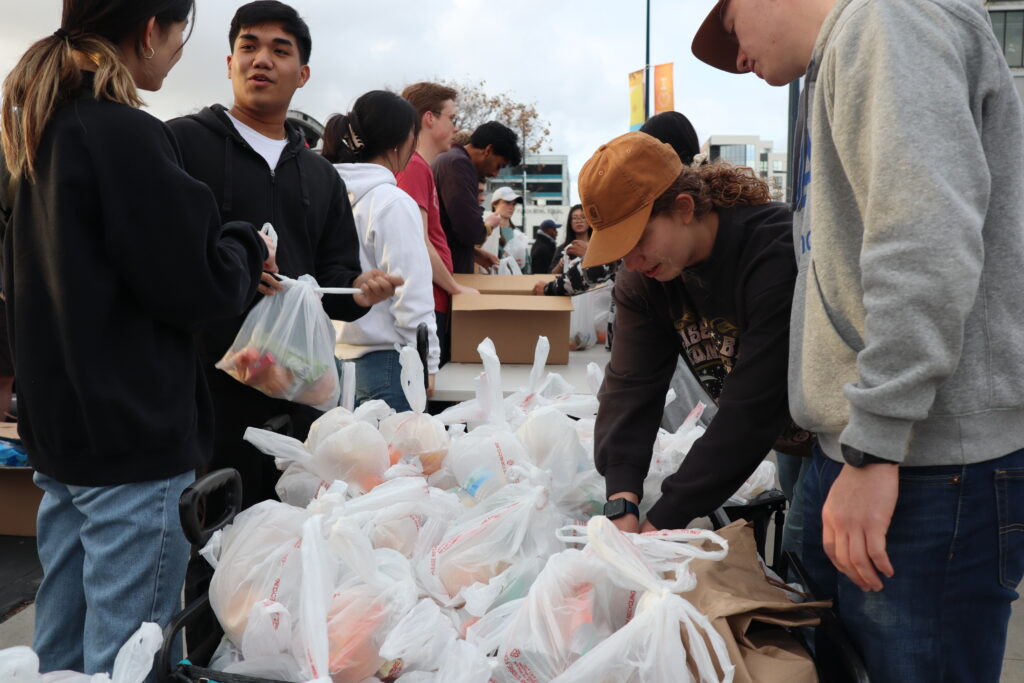
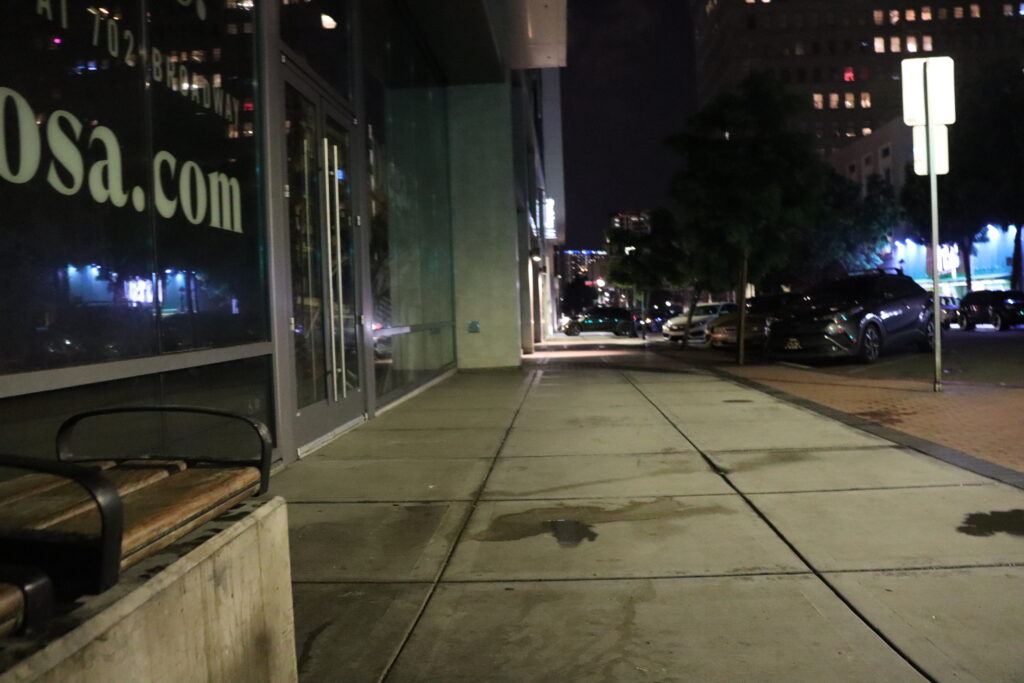
Downtown San Diego is now a ghost town when it comes to its unhoused resident community. This street sits unusually empty on Feb. 26, 2024. Photo by Petrina Tran.
A group of volunteers with Streets of Hope pull a wagon through Gaslamp Quarter full of supplies to give out to the unhoused community on Feb. 26, 2024. Photo by Petrina Tran.
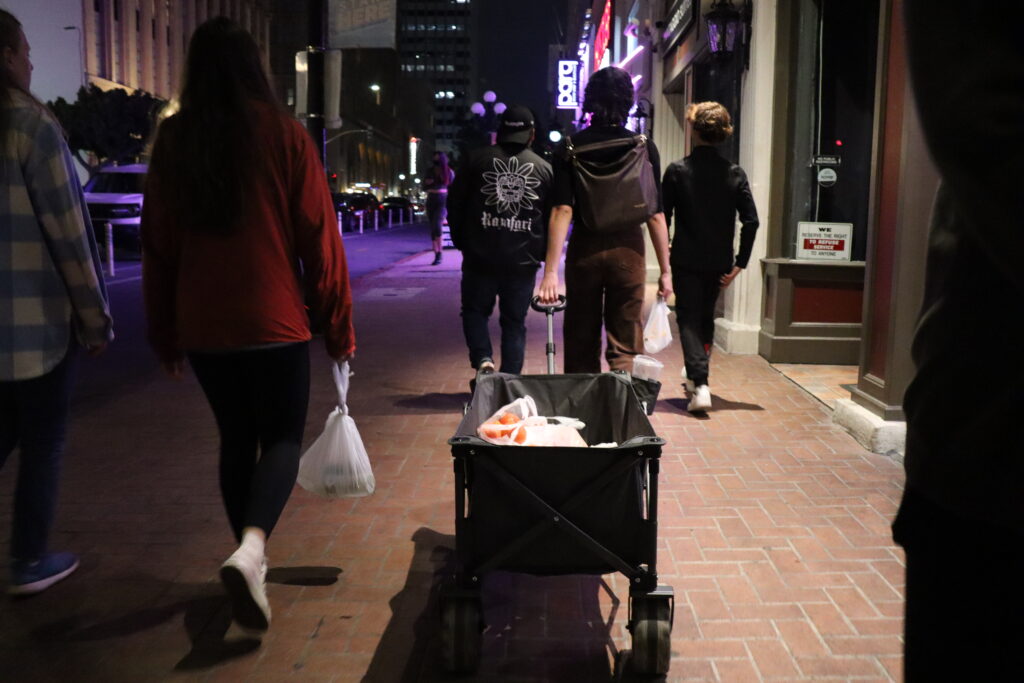
“When the baseball season starts up, they’re sweeping places where people are seen…The Padres games mean that they get swept away and relocated,” said Dan D’Amato, the chairman of the board for Streets of Hope.
The organization also offers free haircuts for unhoused members of the community once a month.
In a story written by Cody Dulaney for inewsource, a local nonprofit news organization in San Diego, “last year’s census of San Diegans experiencing unsheltered homelessness revealed a 32% increase — from 2,494 in 2022 to 3,285, the highest count in at least the past decade.”
This is driven in part by the growing housing shortage in correlation to the steady rise in rental costs and general living expenses. According to the 2023 San Diego Economic Equity report by the San Diego Foundation, 335,000 residents currently live under the federal poverty line. This is defined as “$24,860 or less annually for a family of four” by the San Diego Foundation. It’s approximately 11% of the county’s total population and a number that exceeds the total number of residents in 93% of other counties in the United States.
Nancy Restrepo-Wilson is the director of Social Services for Father Joe’s Villages, an organization that is currently serving the local unhoused community.
“It’s a systematic and systemic issue; we come from a very large history where there are populations made to be in poverty,” said Restrepo-Wilson. “We have historic racism and discriminatory practices. Those systemic issues impact people’s access to resources and opportunities. Poverty is one of the causes that we have encountered as to why people become homeless.”
Alongside poverty, Restrepo-Wilson added that not having sufficient or affordable housing, job loss, evictions, and lack of mental health services all contribute to the vicious cycle of homelessness. She said that oftentimes, stereotypes are built around perceptions like all members of the community being homeless due to drug addictions. Restrepo-Wilson countered that many times homelessness and trauma lead to drug abuse, which traps users in this cycle.
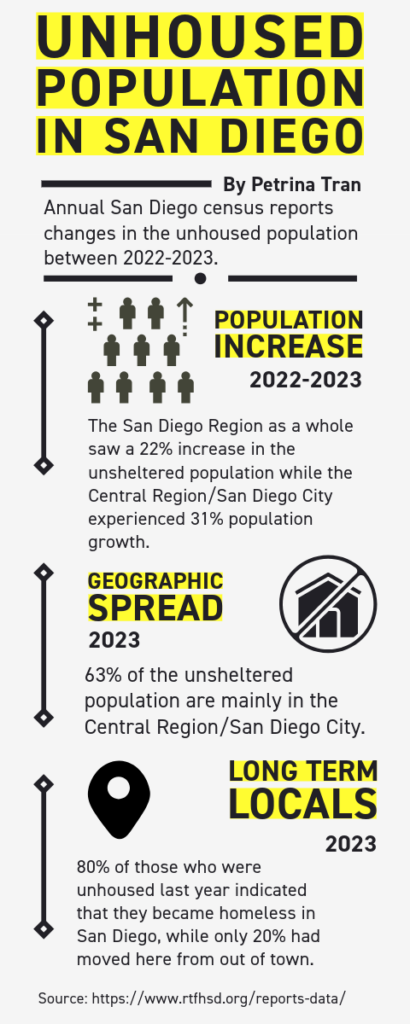
The True Cause
However, these issues are only a small percentage of the cause behind the crisis. Economic reasons and lack of affordable housing are bigger reasons as to how circumstances can bring people down when it’s least expected. Spaces in shelters are limited with long waiting lists and affordable housing has become increasingly sparse and vied for.
Drawing from the 2023 point-in-time data from the Regional Task Force of Homelessness, some key findings and trends in the unhoused population here in San Diego were identified. Between 2022 and 2023, San Diego experienced population growth in the unhoused community, with the majority focused in the central region of the city, namely downtown. Of those surveyed in 2023, most began their unhoused journey in San Diego as well.
D’Amato brought up what he called “the invisible homeless,” who are getting by living their lives on the street quietly. In contrast, those that are visible and the most noticed build the stereotype because because they may be more vocal on the streets due to a drug addiction or other issues.
“There’s a lot out there that you don’t see, could be me and you at one point in our lives. There’s homeless kids. It’s truly a diverse community that is wonderful and unique, there is a beauty and a life that’s there,” said D’Amato.
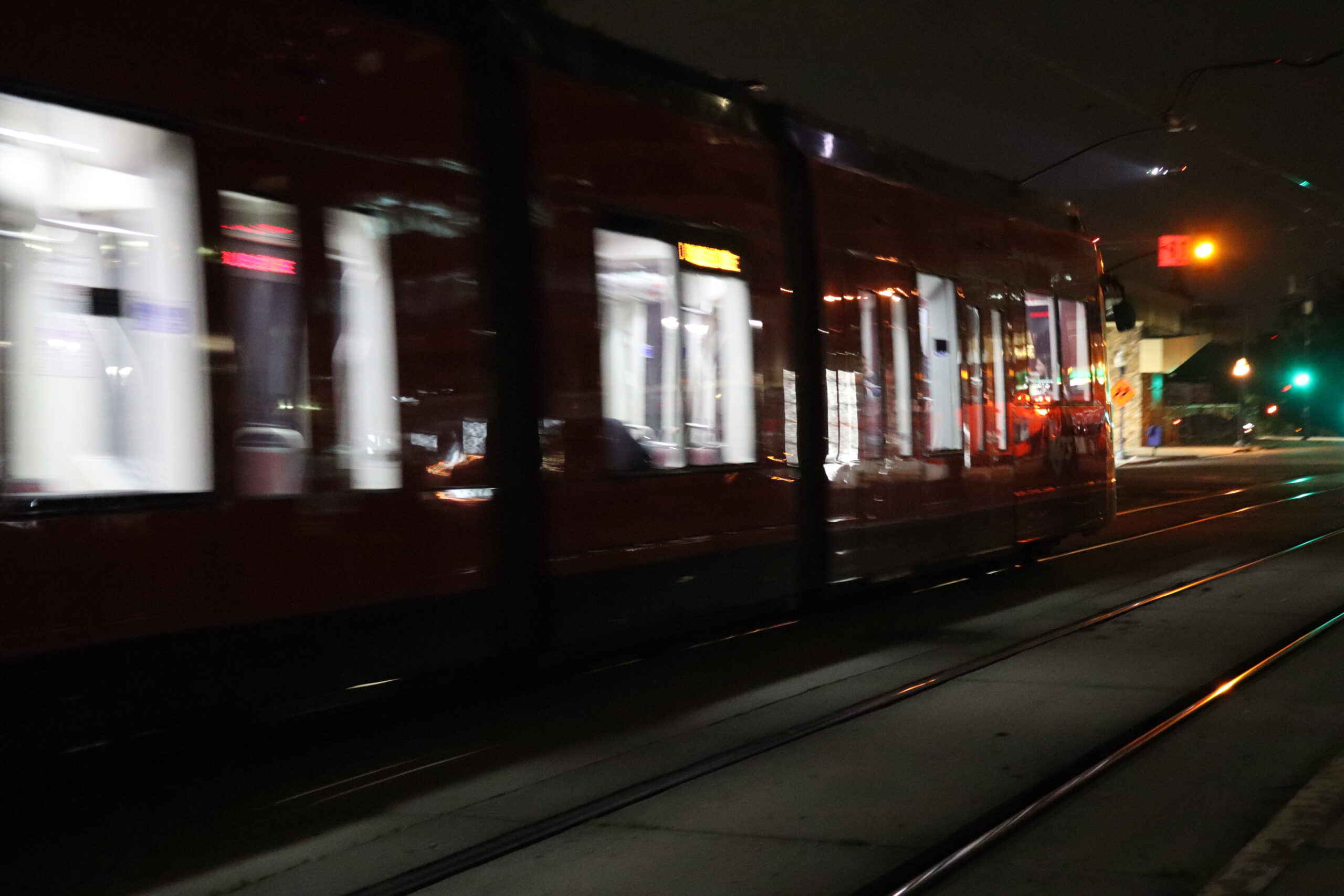
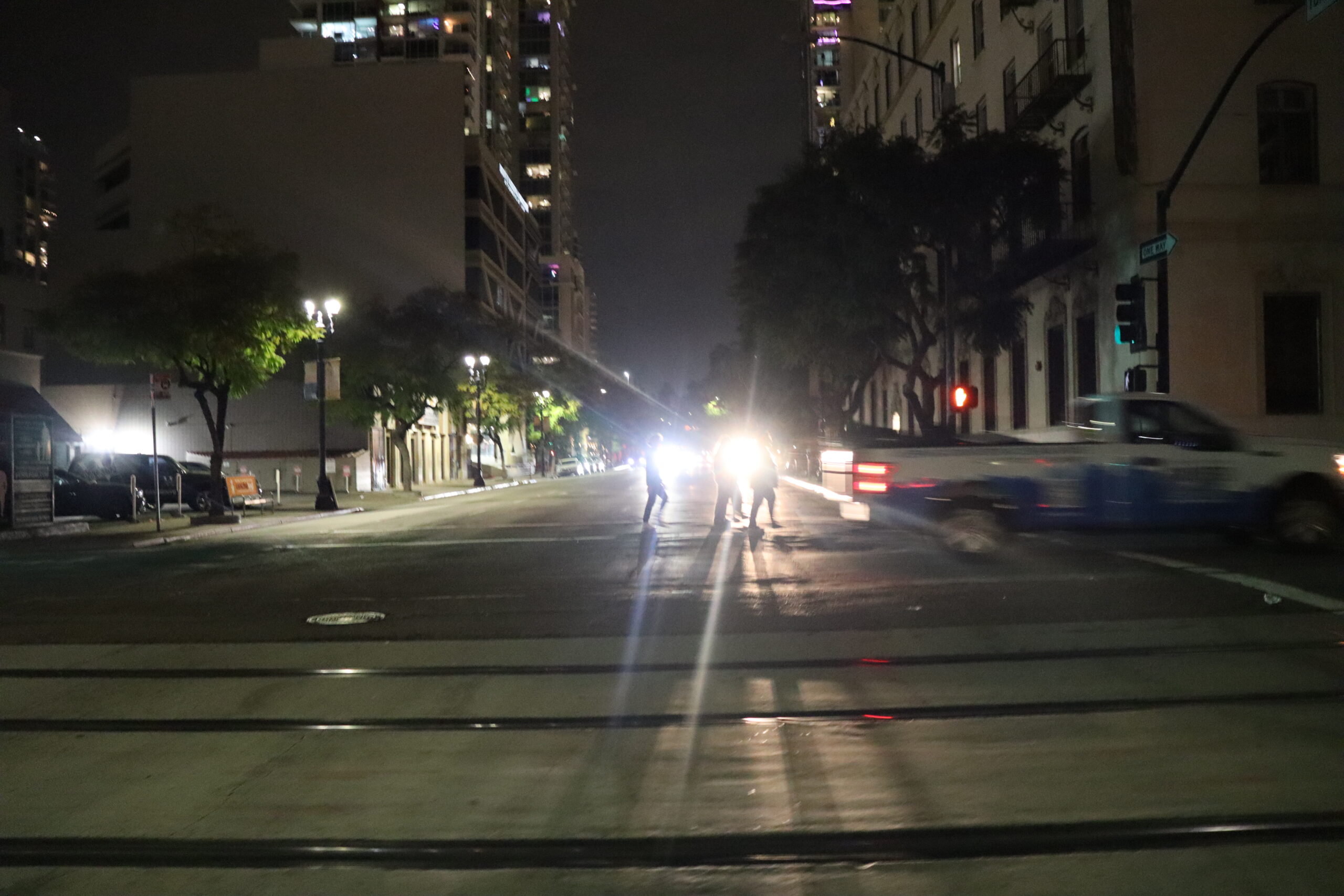
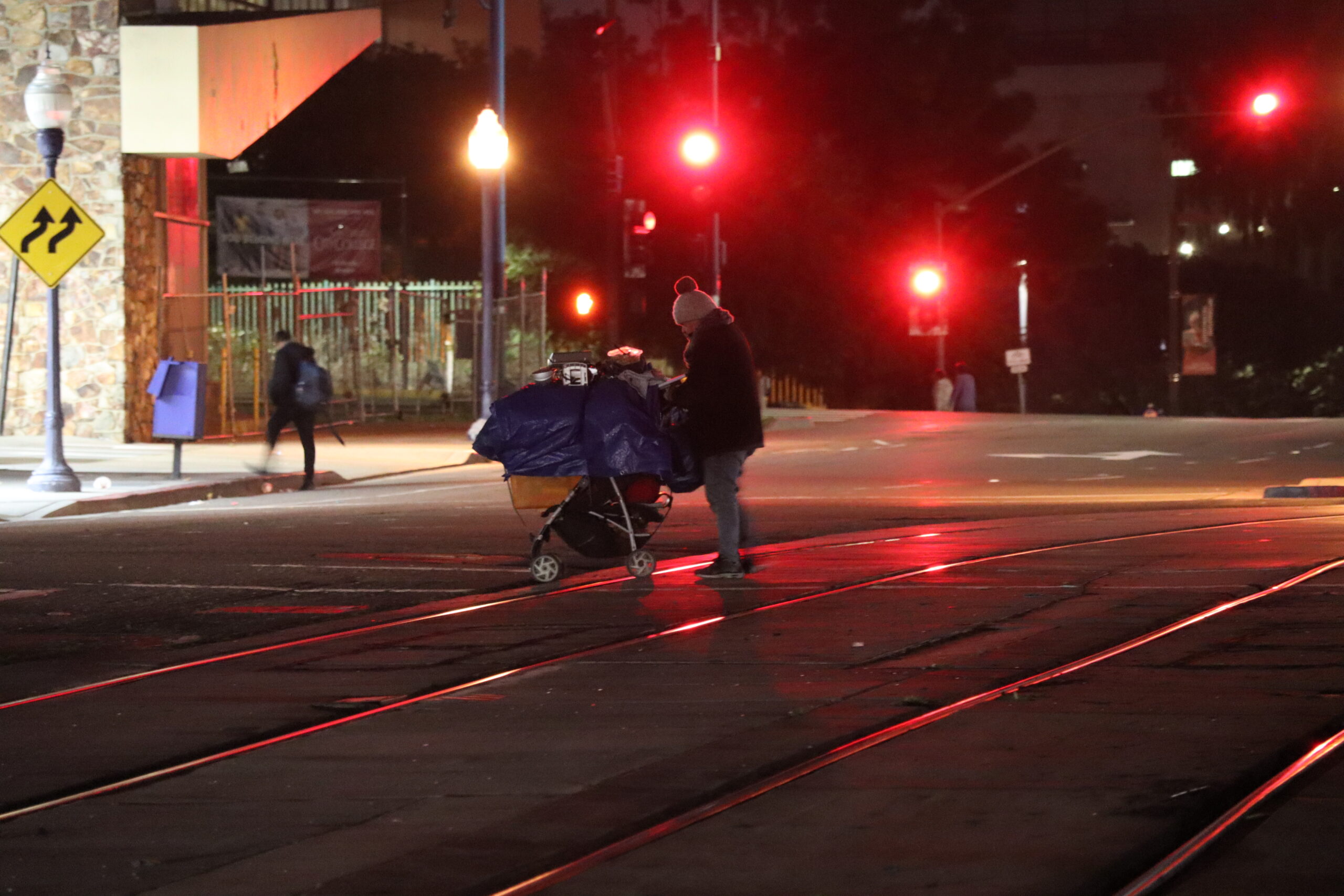
First Hand Experience
Sean Thom and his cat, Sebastian, were evicted from their apartment on Feb. 29 when a roommate failed to pay rent. Due to his eviction, Thom’s credit score was tanked and he is now unable to get approval for a permanent living situation.
“Once you get an eviction, it’s like a semi-truck crashes into your credit and runs it into the ground,” said Thom. “I was just a person living in a house, I didn’t choose this…I didn’t ask for my roommate to stop paying rent, I didn’t ask for my landlord to not help me out, I didn’t ask for any of this. I was paying my rent. I was doing what I was supposed to do.”
Upon eviction, Thom sought help from the 211 relief program but found it to be confusing due to a string of phone numbers, misinformation and people redirecting responsibility to another entity.
“I didn’t do anything, I didn’t bother anybody and now I’m stuck out here on the street. I have to wake up at four in the morning so I can get my tent down by five…because they just want me out of here before the public sees me because I’m not a person anymore,” said Thom.
Sirens blared as an ambulance passed by 15th Street and Thom was interrupted by Sebastian’s meows.
“My first week out was just horrible. I finally found this nice peaceful place, a park out behind the convention center and it was just a place where there weren’t any cops…I was going down the embarcadero…it was absolutely crowded at 6pm, and I was completely invisible. There wasn’t a gasp. I had fallen over and everybody kept moving. I didn’t even have to look up to know that nobody had even glanced in my direction. I held still for a second and just realized that within a week, I had disappeared from the world,” Thom said.
Thom said that he would be taking up Street’s of Hope’s offer for an interview in the coming weeks to potentially help him find housing.
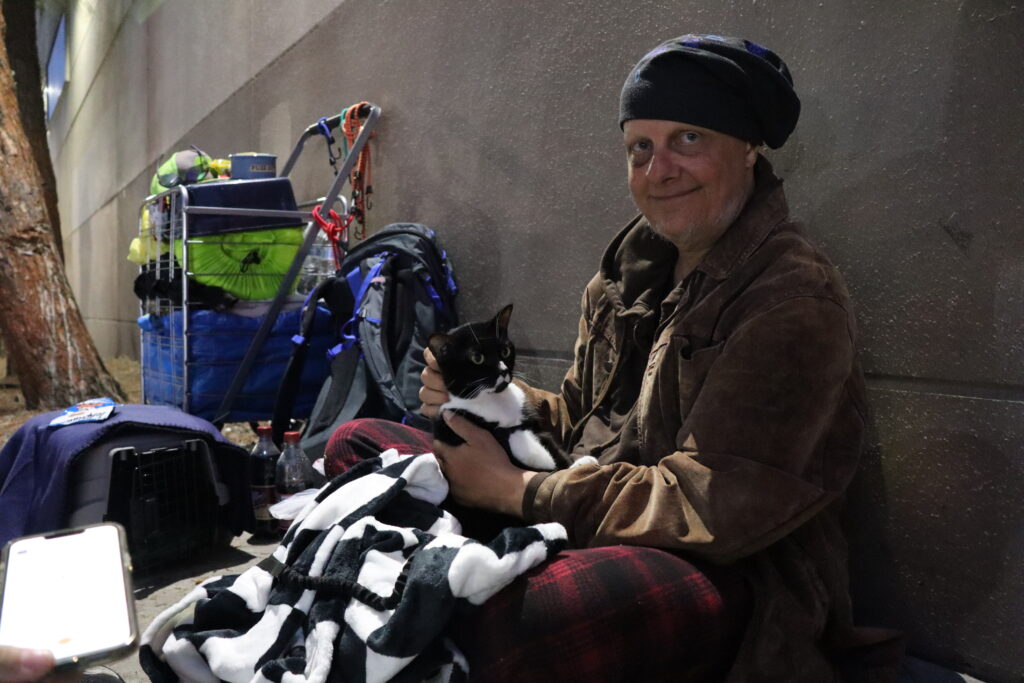
Sean Thom and his cat, Sebastian, pose for a photo on Feb. 26, 2024. Sean has been living on the streets of San Diego for the past two months after he was evicted from his apartment when his roommate didn’t pay rent. Thom said that police came by once and made fun of him having a cat while being homeless. He is currently seeking aid from Streets of Hope to find more permanent housing for him and his animal companion. Photo by Petrina Tran.
A Fresh Start
Debra Neer was recently aided by Streets of Hope in getting successfully rehoused. She is in the process of seeking out job opportunities and more permanent housing.
“I’m currently doing a job training program with Dreams for Change but my hours are almost up. I’m looking into the Kitchens For Good internship program and hoping to hear back sometime this week,” said Neer.
“Not all homeless people chose to be this way. Some people are because they have issues with drugs and alcohol. Not all homeless people are bad troublemakers,” Neer added.
Debra Neer stands in front of Smart & Final on 720 15th Street on Feb. 26, 2024. Neer is a recently rehoused resident of San Diego who spent decades on and off the streets. She was able to get support from several charity organizations and is currently involved in several professional development programs. Photo by Petrina Tran.
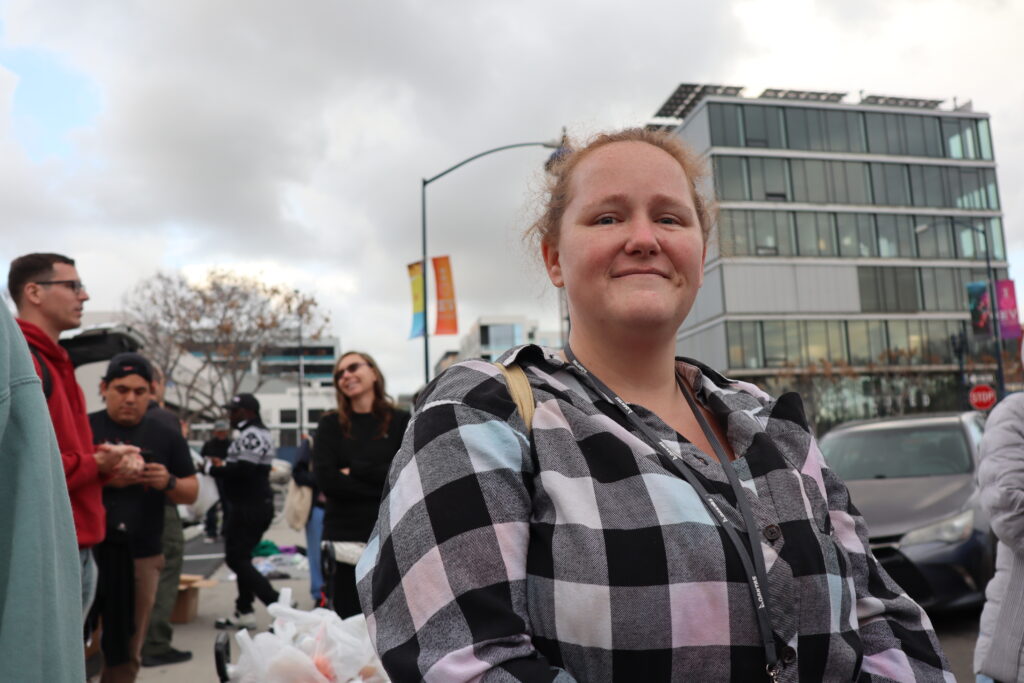
“Homelessness doesn’t define them, it’s just a chapter in their life. We’re trying to get them back on their feet,” said Jorge Verdin, the director of Communications for Father Joe’s Villages.
Leadership from both organizations expressed how universal housing vulnerability can be.
“No one has a desire to be homeless, we pretend that they don’t exist, they don’t suffer, or there’s nothing we can do…but there is a lot. One of them is to literally look at them as human beings and imagine that something has happened to them along the way for them to end up where they are…It’s a collective effort of everyone to find solutions to eliminate poverty and homelessness,” said Restrepo-Wilson.
Meeting locations for organizations currently providing support for the unhoused community downtown.


